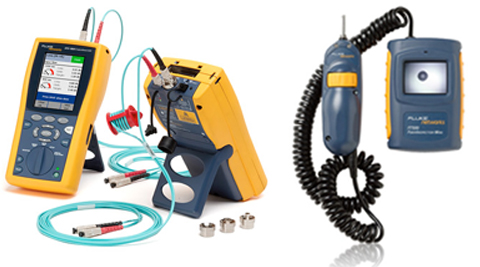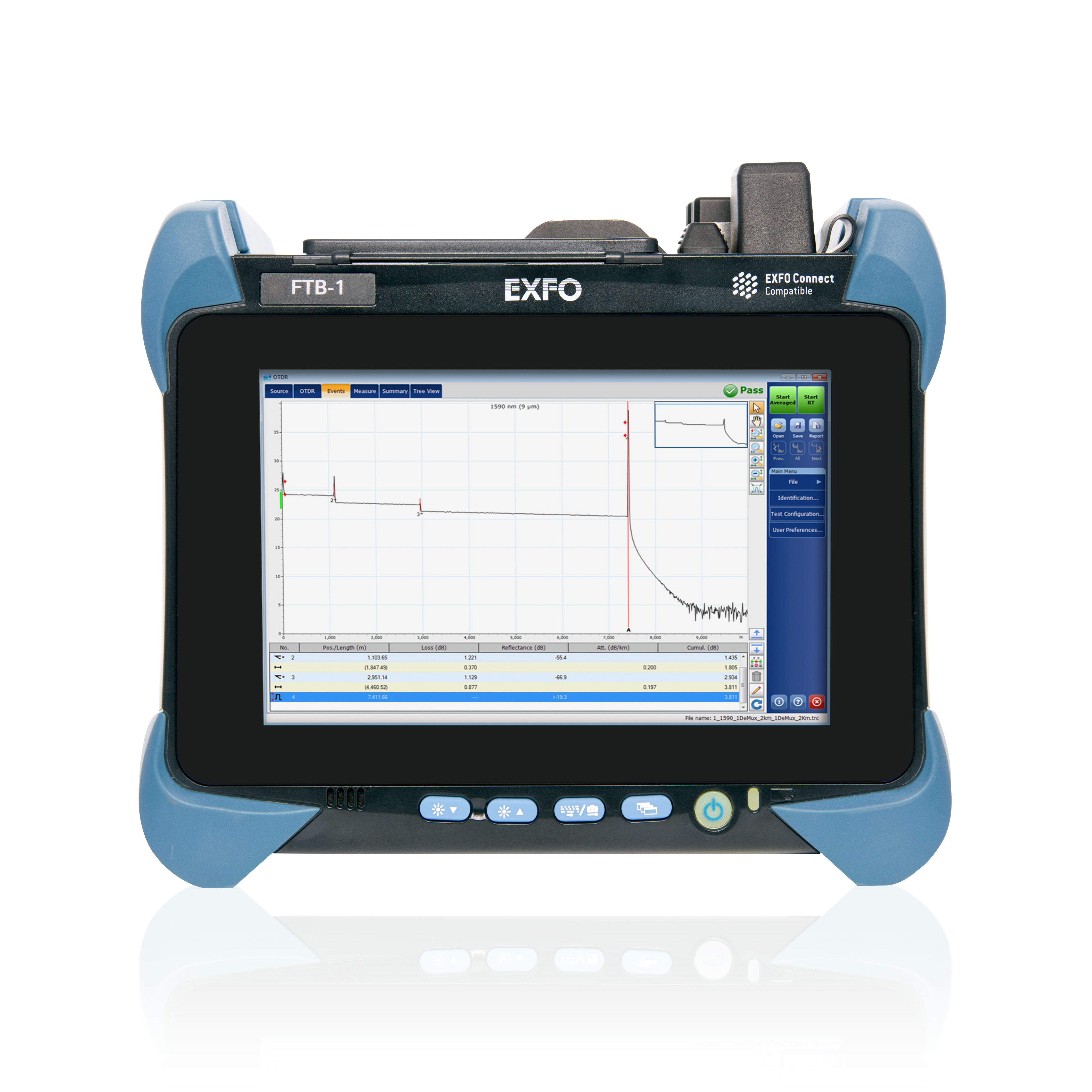Exploring Advanced Techniques in Fiber Measurement and Their Industry Impact
In today's textile industry, exact fiber measurement is important for maximizing production processes and meeting sustainability goals. With the rise of innovative imaging and analytical tools, you can acquire deeper insights into fiber structure and composition. This change not just boosts performance yet additionally straightens with sector requirements. As these sophisticated methods develop, you may wonder how they can further change making techniques and effect the future of textiles.
The Significance of Accurate Fiber Measurement in Textile Manufacturing

Cutting-edge Imaging Technologies for Fiber Evaluation
When it pertains to fiber evaluation, ingenious imaging innovations are game changers. High-resolution microscopy methods and spectroscopic analysis methods provide you with detailed understandings right into fiber framework and structure. These improvements not only enhance precision yet additionally enhance your measurement processes.
High-Resolution Microscopy Techniques
High-resolution microscopy strategies have actually reinvented fiber analysis, allowing scientists to picture fibers at unmatched levels of information. With techniques like scanning electron microscopy (SEM) and transmission electron microscopy (TEM), you can observe fiber morphology, surface attributes, and cross-sections with exceptional clearness. These techniques allow you to compare various fiber kinds and evaluate their architectural stability. You'll find that high-resolution imaging aids determine defects, incorporations, and other crucial characteristics that can affect product performance. In addition, improvements in digital imaging software have actually improved photo processing, making it easier to assess and interpret information. By embracing these innovative methods, you can drive better accuracy in fiber dimension and contribute to advancements in various industries, from textiles to composites.
Spectroscopic Analysis Methods
Spectroscopic evaluation techniques have arised as powerful tools for fiber characterization, giving insights that match high-resolution microscopy. You can make use of methods like infrared (IR) spectroscopy, which helps recognize the chemical structure of fibers by measuring molecular resonances. Raman spectroscopy offers one more layer of detail, permitting you to analyze molecular frameworks via scattering of monochromatic light. These techniques not just boost your understanding of fiber residential properties yet also allow the discovery of contaminations and architectural variants. By integrating spectroscopic techniques with conventional microscopy, you get an extra extensive view of fibers' physical and chemical qualities, increasing your research study precision. Inevitably, these technologies can especially impact product selection and quality assurance in various industries.
Advanced Analytical Tools and Their Applications
As you explore the domain of fiber measurement, you'll discover that innovative logical devices play an essential role in enhancing precision and performance. Strategies like high-performance fluid chromatography (HPLC) and gas chromatography (GC) enable you to examine fiber structure with excellent precision. These devices enable you to determine particular components and contaminants, ensuring quality assurance in your products.Additionally, making use of scanning electron microscopy (SEM) provides you a comprehensive view of fiber structure, aiding you comprehend exactly how different therapies impact efficiency. Modern software program likewise improves data evaluation, making it much easier to interpret complex outcomes and work together across groups.

Impact of Fiber Measurement on Production Performance
While accurate fiber dimension might appear like a little information, it considerably affects manufacturing efficiency in the textile market. When you spend in accurate fiber measurement methods, you can maximize resources usage and lessen waste. This leads to better resource allowance, permitting you to produce premium textiles without excessive using resources.By understanding fiber characteristics, you can tailor production procedures to details products, boosting your workflow and decreasing downtime. As an example, understanding the precise tensile toughness of fibers allows you readjust equipment setups for optimum efficiency. This not only speeds up production but also guarantees consistent product quality.Moreover, accurate fiber measurement helps you identify issues early in the production line, preventing costly reworks and delays (fiber measurement). In general, executing innovative fiber dimension methods enhances operations, increases efficiency, and ultimately increases productivity. In today's open market, every information counts, and specific fiber dimension is a game-changer
Sustainability Considerations in Fiber Assessment Techniques
When you assess fiber, it's necessary to contemplate lasting methods that can reduce environmental effect. Using environmentally friendly dimension approaches and decreasing waste in your assessments can substantially improve your overall sustainability. In addition, incorporating lifecycle analysis right into your methods can provide a more clear image of your fiber's ecological footprint.
Eco-Friendly Measurement Methods
Taking into consideration the growing need for sustainability in various sectors, embracing eco-friendly dimension methods for fiber analysis has come to be vital. You can start by using non-toxic solvents and naturally degradable products in your testing procedures. These options not just decrease ecological impact however also improve safety and security for your team. Applying digital measurement strategies can even more decrease waste, as they frequently call for less physical samples and sources. In addition, leveraging innovative innovations like near-infrared spectroscopy can generate accurate results without unsafe chemicals. By choosing these greener techniques, you add to a more sustainable future while preserving high criteria in fiber quality. Eventually, incorporating green practices into your fiber evaluation not just straightens with consumer values however likewise enhances your brand's credibility.
Minimizing Waste in Analysis
To effectively decrease waste in fiber evaluation, you can carry out approaches that streamline your testing procedures and minimize resource consumption. Start by optimizing sample sizes; using smaller samples can yield accurate results while conserving materials. Next, purchase multifunctional equipment that allows for numerous tests without needing several devices, reducing energy and resource usage. You must additionally think about embracing digital tools for data collection and analysis, which can lower paper waste and boost performance. Routinely training your group on lasting techniques ensures everybody's on board with waste decrease objectives. Teaming up with distributors who prioritize sustainability can better improve your efforts, permitting you to examine fibers while maintaining a dedication to ecological responsibility.
Lifecycle Evaluation Combination
Incorporating lifecycle evaluation (LCA) into fiber analysis techniques can considerably enhance sustainability initiatives. By examining the environmental influences of fibers from production to disposal, you can identify areas for renovation. This approach assists you recognize resource usage, power use, and waste generation throughout the fiber's life.When you integrate LCA, you're not simply gauging fiber qualities; you're additionally considering the environmental impact. This all natural view enables you to make educated choices Continued that prioritize sustainability. You may choose fibers that require fewer sources or have a reduced carbon impact. Eventually, LCA empowers you to enhance procedures, lower waste, and advertise eco-friendly options in fiber manufacturing, straightening your techniques with worldwide sustainability goals.
Market Requirements and Rules Shaping Fiber Measurement
As the demand for premium fiber items expands, comprehending the sector criteria and laws that control fiber dimension becomes important. These guidelines guarantee consistency, accuracy, and safety in the measurement process, which ultimately impacts item top quality. Organizations like ASTM International and ISO stated criteria that suppliers have to abide by, covering numerous elements such as fiber identification, stamina testing, and moisture content evaluation.

Future Patterns in Fiber Measurement and Textile Production
How will innovations in innovation improve fiber measurement and fabric manufacturing? You'll see a change toward automation and real-time information analysis, boosting accuracy and performance. Smart sensors will certainly monitor fiber buildings constantly, permitting for instant changes in production. This suggests you can expect better textiles with much less waste.Moreover, AI and device understanding will certainly forecast patterns in customer choices, enabling producers to adapt rapidly. fibre testing equipment. By integrating blockchain technology, you'll have far better traceability of products, ensuring sustainability and moral sourcing.Virtual truth and boosted reality will play a duty also, offering immersive training experiences for workers on fiber handling and manufacturing processes.As you welcome these adjustments, the textile industry will transform right into an extra receptive, lasting, and innovative sector, setting new requirements for high quality and efficiency. The future of fiber dimension and fabric production is intense, and it's time to obtain on board
Regularly Asked Questions
What Are one of the most Common Fiber Types Measured in the Industry?
In the industry, you'll typically come across all-natural fibers like cotton and woollen, in addition to synthetic choices such as polyester and nylon. Each type has distinct residential properties, impacting their dimension and application in different products.
How Do Fiber Measurements Influence Customer Item High Quality?
Fiber internet measurements directly affect customer product high quality by guaranteeing consistency, longevity, and efficiency. When you comprehend these metrics, you can make educated choices, leading to enhanced satisfaction and far better total experiences with the products you use.
What Training Is Needed for Fiber Dimension Technicians?
To become a fiber dimension professional, you'll need specialized training in fabric science, measurement strategies, and devices procedure. Hands-on experience and qualifications can improve your abilities, making you efficient in precise fiber evaluation and top quality assurance.
Exist Any Type Of Certifications for Fiber Dimension Professionals?
Yes, there are certifications for fiber dimension professionals. You can seek choices like the Certified Optical Fiber Technician (CFOT) or numerous industry-specific qualifications that boost your competence and reputation in fiber measurement and screening.
Exactly How Can Tiny Services Execute Fiber Dimension Techniques Efficiently?
You can execute fiber measurement strategies successfully by purchasing inexpensive devices, training your team, and developing clear procedures. Team up with market specialists and constantly improve your processes to enhance precision and check this site out effectiveness with time.